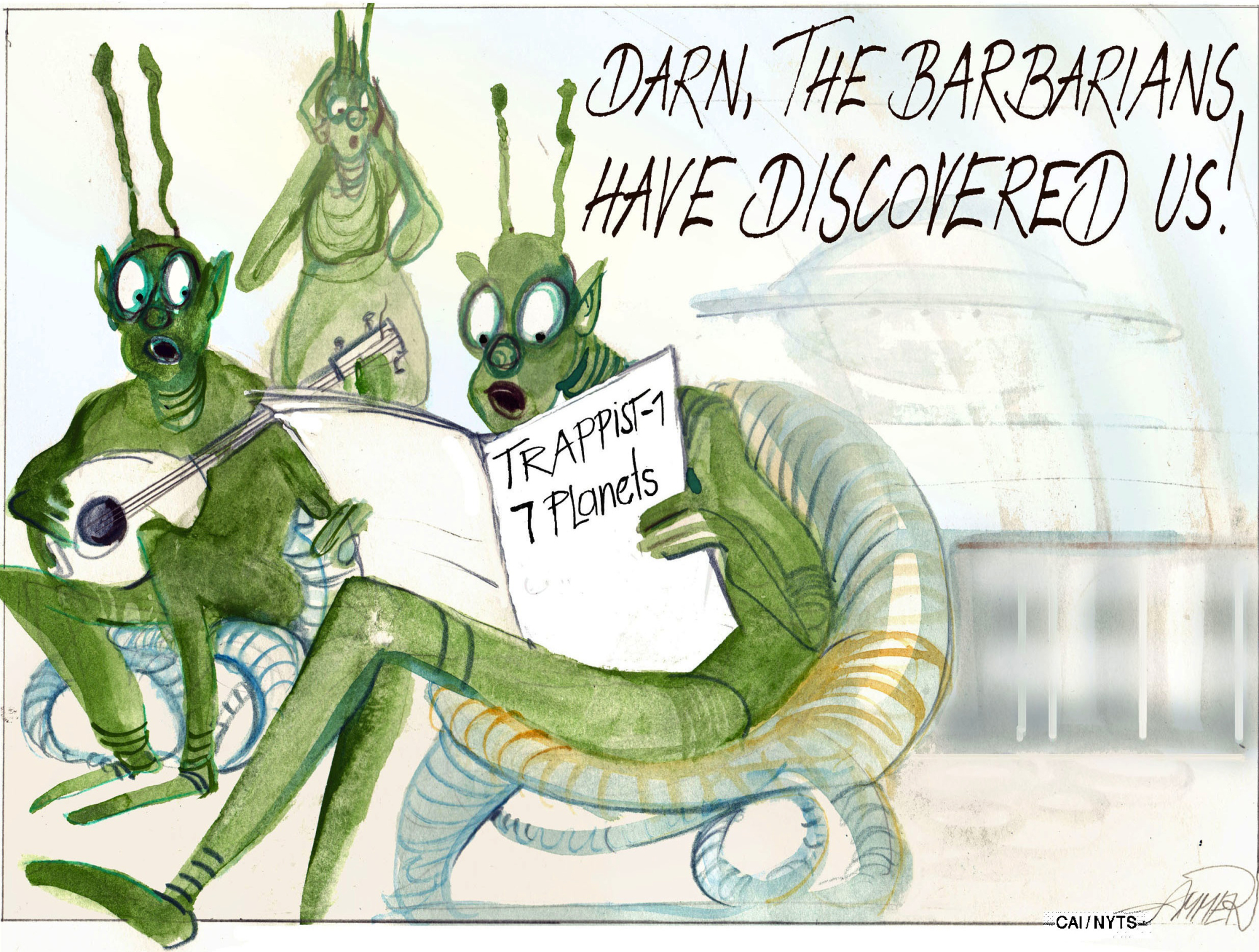Only 39 light-years away, astronomers have found seven planets circling a very small "red dwarf" star called Trappist-1. All seven are in or near what we call the "Goldilocks zone": not too hot, not too cold, but just right for water to remain liquid on the planet. So we all speculate once again, but a little more bravely this time, about whether some of these planets might be home to life.
Not only are three of Trappist-1's planets dead center in the Goldilocks zone; the other four are on the fringes of the habitable zone. And they are all big enough — from half Earth's size to slightly bigger than our home planet — to retain an atmosphere for billions of years.
That's long enough for life to evolve on one or more of them. It's probably even long enough for complex life forms to evolve there, as it did on Earth.

















With your current subscription plan you can comment on stories. However, before writing your first comment, please create a display name in the Profile section of your subscriber account page.